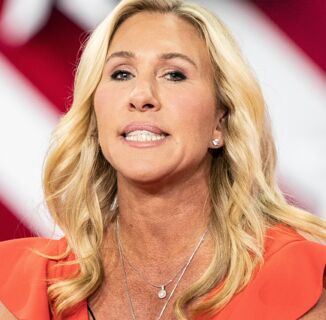Today marks Intersex Awareness Day. Emi Koyoma of the Portland Intersex Initiative and Bodies Like Ours co-founder Betsy Driver celebrated the very first Intersex Awareness Day in 2003 in an effort to raise awareness about being intersex and the unique forms of marginalization that entails.
The date was chosen to honor a 1996 protest led by members of the Intersex Society of North America with help from allies at the Transgender Menace. They gathered outside the American Academy of Pediatrics’ annual convention in Boston, Mass. These ISNA members, including Canadian sociologist Morgan Holmes and the late American activist Max Beck, had come to protest the medical treatment of intersex children, particularly the totally unnecessary and wholly non-consensual surgeries performed on these kids.
More than two decades later, however, not much has changed.
Advocates for the needs of intersex peoplethat is, people who are born with chromosomes, gonads, and genitalia that don’t match up with what a doctor might consider to be strictly male or femalepoint to the lack of appropriate care for this diverse community and the continued practice of operating on intersex kids as proof of that.
That’s why Human Rights Watch and interACT have published a 41-page report titled “A Changing Paradigm: US Medical Provider Discomfort with Intersex Care Practices,” which calls on American medical professionals to enact standards of care for intersex patients that rules out surgical intervention until a patient is old enough to consent to such procedures.
“The intersex community today is saying the same thing we were saying two decades agowe want doctors to care for us, not try to ‘fix’ us,” Kimberly Zieselman, an intersex woman and the executive director of interACT Advocates for Intersex Youth, said in a press release. “We’re not anti-doctor or anti-surgery, we’re just pro-consent and pro-honesty, especially for children who are too young to speak or to comprehend what’s going on around them.”
According to Human Rights Watch, the removal of gonads can cause sterilization, which would then require a lifetime of hormone replacement therapy, while surgery to alter the size of a child’s genitals can lead to incontinence, scarring, a lack of sensation, and psychological trauma.
“This is not how we understand anatomy in almost any other medical conversation,” Kyle Knight, a researcher with the Human Rights Watch and the author of this report, told INTO. “No one is saying that it will be easy having a kid with a body that’s different. It’s not going to be easy, and that’s OK. Society deals with people who are slightly different all the time without proposing a solution based on a hypothetical outcome of how ‘hard’ their life could be.”
Knight added that the medical professionals who make these decisions, such as operating on children who can’t even talk or walk yet much less consent to surgery, don’t even know how “hard” their patients’ lives will be due to their chromosomal and anatomical differences. Surgical intervention has been de rigueur since the 1960s, and there have been no studies performed on the lives of intersex people who were operated on at a young age.
“[Electroshock therapy] is an apt comparison,” Knight said. “You can extend that to conversion therapy as well, along with other ways that [parents and medical professionals] have tried to correct a difference they observe in childrenThey’re pseudoscience, they’re not effective, and they’re really psychologically harmful, just like these surgeries.”
“Just let ‘em grow up,” he added. “They’re fine.”
For more information on the intersex standards of care that Human Rights Watch and interACT are calling for, read their full report here.
Photography: Getty Images / BSIP UIG
Don't forget to share:
Help make sure LGBTQ+ stories are being told...
We can't rely on mainstream media to tell our stories. That's why we don't lock our articles behind a paywall. Will you support our mission with a contribution today?
Cancel anytime · Proudly LGBTQ+ owned and operated
Read More in Impact
The Latest on INTO
Subscribe to get a twice-weekly dose of queer news, updates, and insights from the INTO team.
in Your Inbox













